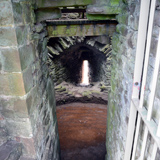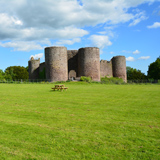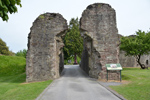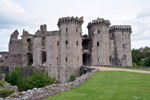History
White Castle, Skenfrith Castle, and Grosmont Castle were built in Monmouthshire soon after the Battle of Hastings in 1066 to protect the communication routes between Herefordshire and Wales as the Normans advanced into Wales. They were earth-and-timber castles, possibly commissioned by William FitzOsbern.
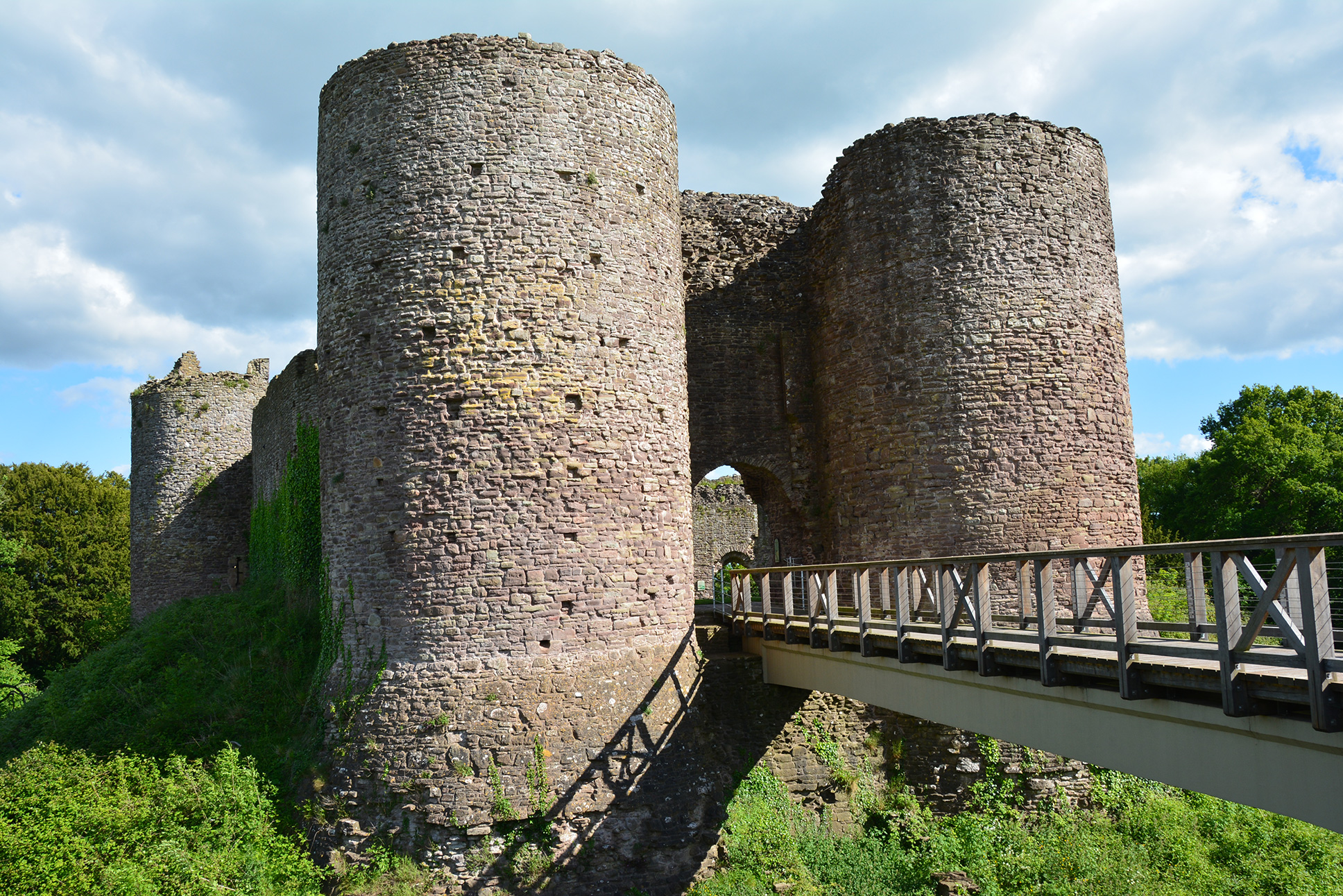
William the Conqueror made one of his principal supporters, William FitzOsbern, Earl of Hereford. FitzOsbern built castles at Chepstow and Monmouth, at each end of the river cliffs of the lower Wye, from which FitzOsbern oversaw areas of central and eastern Monmouthshire, including the area that included the Three Castles.
In 1071, William FitzOsbern died in the Battle of Cassel in Flanders. His son, Roger de Breteuil, 2nd Earl of Hereford, was involved in a rebellion against King William in 1075, so instead of inheriting his father's castles, they were placed under crown ownership.
In 1135, a Welsh revolt took place, and in response, King Stephen restructured the land holdings in the Welsh Marches, bringing White Castle and its sister castles at Grosmont and Skenfrith back under the crown's control, formally creating the lordship known as the "Three Castles."
Tensions grew following an attack by de Mortimer and de Braose on their Welsh rivals in the 1170s, and in 1182 the Welsh attacked Abergavenny Castle. Thus, the crown strengthened White Castle to defend against an impending attack. Ralph of Grosmont, a royal official, added the stone curtain wall around the inner ward and a stone Keep within.
In 1201, King John gave the castle to Hubert de Burgh, John's Chamberlain. Over the next few decades, it would change hands between several owners, as Hubert de Burgh, William de Braose, 4th Earl of Bramber, and the crown took control of it. William de Braose was a favorite of King John, and the King granted William the castles of Gwent (White Castle, Skenfrith, and Grosmont Castle) in 1206 for his service in France. Others saw this as nothing more than a bribe paid to William de Braose for his silence regarding the demise and disappearance of Arthur, King John's nephew. In 1207, John retook the castles from de Braose after a falling out. But during the First Baron's War, de Braose's son, John, took the opportunity to retake the castles.
Hubert de Burgh regained some power and was made the Earl of Kent before retaking the Three Castles for himself in 1219 during the reign of King Henry III. Hugh visited the Three Castles at least three times between August of 1220 and June of 1222.
In February of 1254, Prince Edward, future Edward I, took possession of White Castle and made several renovations that would be considered a masterpiece of military engineering and later be incorporated into his Iron Ring of Castles in north Wales.
In the 13th century, the castle was almost completely rebuilt, with the Keep demolished, a new Gatehouse with twin towers was built, and four new towers. The original entrance was next to the Keep from across the hornwork. A postern gate replaced the old entrance. Around this time, the castle started being referred to as White Castle due to the white rendering applied to its walls. It was initially called Llantilio Castle.
In 1267, White Castle was granted to Edmund Crouchback, Earl of Lancaster, Edward's younger brother. It remained under the Earldom and later the Duchy of Lancaster until 1825.
Following Edward's conquest of Wales in 1282, much of White Castle's military use was no longer necessary, and it began to fall into ruin by the 16th century.
In 1922, White Castle was placed into the state's care and is now managed by CADW.
Castle Highlights
White Castle is the most imposing and well-preserved of the Three Castles. The inner ward is reached across a bridge spanning a deep, steep-sided water-filled moat. Initially, the bridge would have been about half as long, with a drawbridge spanning half of the moat closest to the Gatehouse.
The Gatehouse is flanked by twin round towers. The West Tower is still accessible for climbing. At the inner ward's far end, the Keep's ruins can be seen, as well as foundations for other buildings, such as a Hall, Well, Kitchen, Chapel, Apartments, and Brewhouse.
The outer ward retains large portions of the rampart wall, with three round towers and a square tower. The square tower had a fireplace and a garderobe and was used to house the castle administrator. The ruins of the Outer Gatehouse are also present between the inner and outer wards. A barn may have been located in the northwest area of the outer ward.
White Castle can be explored in an hour or two unless you make a longer day of it with a picnic. Grosmont Castle and Skenfrith Castle are both close enough to visit on the same day, which is recommended since these castles are historically intertwined.
